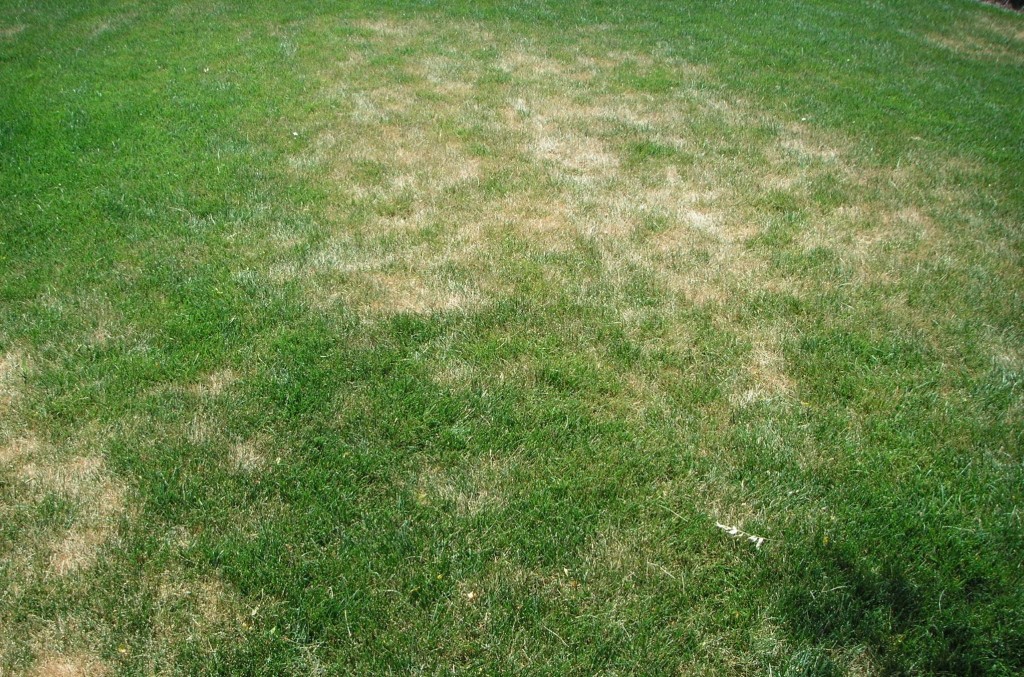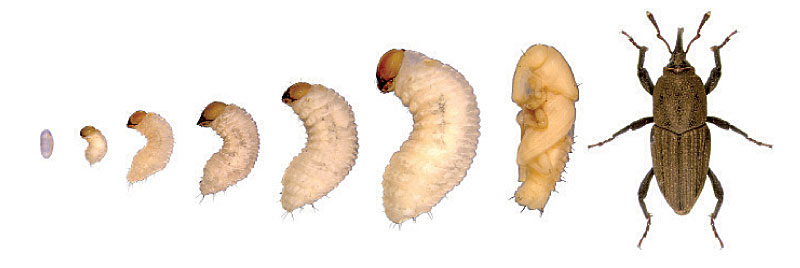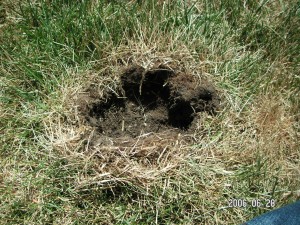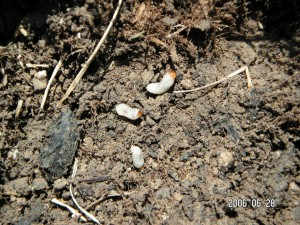What To Do In The Aftermath
What To Do In The Aftermath
A severe infestation of billbug grubs can leave your lawn looking like a battlefield… a battle they won… decisively. But as bad as it may look, all is not lost. The damage is done, but they are now beginning to retreat. Billbug grubs go through stages in the life cycle shown below. Right now they are moving into the pupal stage and will soon be hatching into adults and preparing to find a place to hide for the winter. In fact you might see the adults crawling across the sidewalk in late summer/early fall looking for a place to overwinter.
The life cycle of the Bluegrass Billbug begins in the spring when the adults emerge from their cover and seek out bluegrass to lay their eggs in the crown of the grass plant. This egg hatches into a small larvae which initially feeds on the stems of the grass, but as it grows and goes through several stages, it feeds on the roots of the grass. This is when it does the most damage. In late July and early August they pupate in the soil, emerging as adults in late summer. After spending a few weeks in the lawn, they begin seeking cover to hide for the winter. This is when you are most likely to see the adults as they cross your sidewalks looking for a winter home under debris.
It’s actually not quite that simple since we now have several other species of billbugs in east Idaho, including the Denver Billbug which can overwinter both as an adult or as a mature larvae. But the bottom line is that they all quit munching on our lawns by the end of the summer so our focus now needs to not be on how to kill them, but on repairing the damage.
Mid August to mid September is the ideal time to reseed badly damaged areas. Simply rake through the area with a steel garden rake to expose some of the soil. Spread T&C Seed and Sod Starter fertilizer on the area per directions on the bag. Scatter lawn seed (preferably a mixture of blue grass and grub resistant rygrass) and then drag the rake back across the area to ensure the seed comes in contact with the soil.
grass and grub resistant rygrass) and then drag the rake back across the area to ensure the seed comes in contact with the soil.
Then, and this is critically important, you will need to water for a few minutes 2 or 3 times per day to make sure the surface stays moist until all the seed has germinated. This usually takes about a month. The grass will germinate this fall, but probably won’t fill in much. Feed it, along with the rest of your lawn, with T&C Winterizer Lawn Food in early October. In the spring it will fill in quickly and look great by Mother’s Day.
Additional information: MyGardenGeek.com, Utah State University






